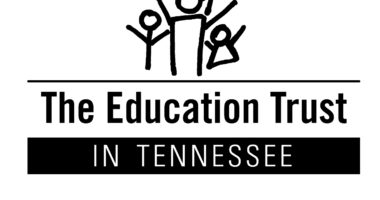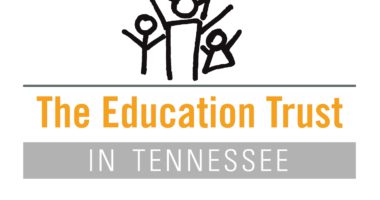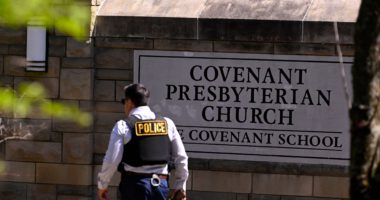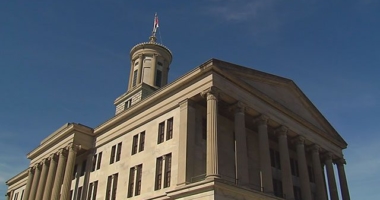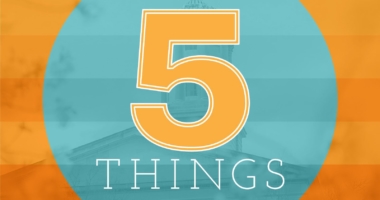What the December Federal Funding Package Means for Tennessee
The federal government passed a funding package in late December 2020. One part of that package was another $900 billion in stimulus relief under the Coronavirus Response and Relief Supplemental Appropriations Act, 2021 (CRRSA), the first COVID-19 relief package passed since the CARES Act in March 2020.[i] The package also included the Consolidated Appropriations Act, 2021, a $1.4 trillion omnibus spending bill that will fund the government through the rest of FY 2021 (September 30, 2021). [ii]
The Coronavirus Response and Relief Supplemental Appropriations Act, 2021 (CRRSA)
Similar to the CARES Act structure, the CRRSA Act provides an additional $81.9 billion for a modified Education Stabilization Fund that includes three main funding streams: the Elementary and Secondary School Emergency Relief Fund, the Higher Education Emergency Relief Fund and the Governor’s Emergency Education Relief Fund.[iii] Once again, 1% of these funds will be allocated to the Education Stabilization Fund for the Outlying Areas and the Bureau of Indian Education.[iv]
Each of the three education funding streams in the CRRSA Act are described below:
The Elementary and Secondary School Emergency Relief Fund (ESSER II) includes $54.3 billion in federal funding, of which Tennessee is eligible for over $1.1 billion.[v] Ninety percent of funds received by the state educational agency (SEA) must be allocated to local educational agencies (LEAs), leaving 10% for state agency-level activities. Funds can be used flexibly and directed to areas such as learning loss, preparing schools for reopening, testing, repairing, and upgrading projects to improve air quality in school buildings — all of which were also permitted under the CARES Act.[vi] Funds will be distributed to states and then to districts based on the share of funding they receive under Title I of the Every Student Succeeds Act (ESSA), which is used to allocate federal education funding to students from low-income families.[vii] This means that in Tennessee, the Tennessee Department of Education is required to distribute the dollars to districts based on the percentage share of Title I they receive under ESSA. Estimated district allocations can be found here. All funds must be used by September 30, 2023, and states are required to report a detailed accounting of funds, including how funds are used to “measure and address learning loss among students disproportionately affected by coronavirus and school closures.”[viii]
The Higher Education Emergency Relief Fund consists of $22.7 billion in federal funding.[ix] Eighty-nine percent of the funds will be distributed directly to public and private nonprofit institutions. Historically Black colleges and universities (HBCUs), Hispanic-serving institutions (HSIs), and other minority-serving institutions (MSIs) will receive 7.5%of the remaining funds, and the rest will be split between for-profit institutions and those that have the greatest unmet need related to COVID-19.[x] Institutions that receive funds will have a wide range of accepted uses, but will be obligated to spend at least the same amount (not percentage) on emergency grants to students as they did with funds allocated by the CARES Act.[xi] Estimated allocations for individual institutions in Tennessee, including the minimum amount reserved for student aid, can be found here.[xii]
The Governor’s Emergency Education Relief Fund (GEER II) totals $4.05 billion nationally with $2.75 billion reserved for an Emergency Assistance to Non-Public Schools program. The remaining $1.3 billion is to be used for discretionary spending for K-12 or higher education purposes classified as GEER II funds.[xiii] Tennessee is eligible for nearly $101 million dollars in GEER II funding, $72 million of which must be directed to private schools.[xiv] GEER II funds include allowable uses related to preventing, preparing for and responding to COVID-19, similar to the CARES Act GEER funding. Governors must report on their process for awarding funds, including the criteria and process for determining those entities most significantly impacted by COVID-19 and/or essential for carrying out emergency educational services, which is the same as the CARES Act reporting requirements.[xv]
In addition to these funds, the CRRSA provides $10 billion in childcare funding to assist both providers and families, along with $250 million to Head Start programs to address COVID-19 expenses.
The bill also allocates $3.2 billion for low-income families to access broadband by making individuals eligible for a $50 monthly internet subsidy. As part of this program, providers can be reimbursed up to $100 for issuing a Wi-Fi connected device (one per household).[xvi] The bill also establishes an Office of Minority Broadband Initiatives and allocates $285 billion for a pilot program to purchase broadband internet access and related equipment or to hire and train information technology personnel at HBCUs, HSIs, and other MSIs and their surrounding communities.[xvii]
Finally, the CRRSA clarifies that children under six years of age living in households that receive the Supplemental Nutrition Assistance Program (SNAP) do qualify for the Pandemic EBT program, and relaxes barriers to SNAP eligibility for college students enrolled at least half time.[xviii]
Permanent Higher Education Reforms Within CRRSA
Other legislative provisions passed within the Act include simplifying the Free Application for Federal Student Aid (FAFSA), expanding federal Pell Grant restoration for those who were defrauded by predatory for-profit colleges, and repealing the ban on Pell eligibility among students who are incarcerated.[xix] The simplification of the FAFSA is scheduled to take effect in 2023, while other provisions could take effect as soon as this calendar year.
Consolidated Appropriations Act
This part of the bill is best understood as the annual process by which the federal government appropriates funds to ensure its continuous operation. In this part of the bill, the overall funding for the U.S Department of Education is $73.5 billion, a $785 million increase from FY2020.[xx] This includes increased funding for Title I grants, Individuals with Disabilities Education, Title II teacher professional development state grants, Title IV Student Support and Academic Enrichment Grants, Early Childhood Education, Career and Technical Education State Grants, and a $165 increase for the maximum Pell Grant award.[xxi]
[i] Congress of the United States of America, Coronavirus Response and Relief Supplemental Appropriations Act, 2021, December 2020. https://www.congress.gov/116/bills/hr133/BILLS-116hr133enr.pdf
[ii] Congress of the United States of America, Consolidated Appropriations Act, 2021, December 2020. https://www.congress.gov/116/bills/hr133/BILLS-116hr133enr.pdf
[iii] Congress of the United States of America, Coronavirus Response and Relief Supplemental Appropriations Act, 2021, December 2020. https://www.congress.gov/116/bills/hr133/BILLS-116hr133enr.pdf
[iv] U.S. Department of Education, CRRSA ESSER II Methodology and Allocation Table. Retrieved from https://oese.ed.gov/files/2021/01/Final_ESSERII_Methodology_Table_1.5.21.pdf
[v] Ibid
[vi] U.S. Department of Education, ESSER II Fact Sheet. Retrieved from https://oese.ed.gov/files/2021/01/Final_ESSERII_Factsheet_1.5.21.pdf
[vii] U.S. Department of Education, CRRSA ESSER II Methodology and Allocation Table. Retrieved from https://oese.ed.gov/files/2021/01/Final_ESSERII_Methodology_Table_1.5.21.pdf
[viii] U.S. Department of Education, ESSER II Fact Sheet. Retrieved from https://oese.ed.gov/files/2021/01/Final_ESSERII_Factsheet_1.5.21.pdf
[ix] U.S. Department of Education, CARES Act: Higher Education Emergency Relief Fund. Retrieved from https://www2.ed.gov/about/offices/list/ope/caresact.html
[x] Congress of the United States of America, Coronavirus Response and Relief Supplemental Appropriations Act, 2021, December 2020. https://www.congress.gov/116/bills/hr133/BILLS-116hr133enr.pdf
[xi] Ibid
[xii] U.S. Department of Education, HEERF II Allocations for Public and Nonprofit Institutions under CRRSAA section 314(a)(1). Retrieved from https://www.acenet.edu/Documents/CRRSAA-HEERF-Simulated-Distribution.pdf
[xiii] U.S. Department of Education, CRRSA GEER II and EANS Methodology and Allocation Table. Retrieved from https://oese.ed.gov/files/2021/01/FINAL_GEERII_EANS-Methodology_Table_1.8.211.pdf
[xiv] Ibid
[xv] U.S. Department of Education, GEER II Fact Sheet. Retrieved from https://oese.ed.gov/files/2021/01/FINAL_-GEER_FactSheet_1.8.211.pdf
[xvi] Congress of the United States of America, Coronavirus Response and Relief Supplemental Appropriations Act, 2021, December 2020. https://www.congress.gov/116/bills/hr133/BILLS-116hr133enr.pdf
[xvii] Ibid
[xviii] Ibid
[xix] Ibid
[xx] National Conference of State Legislatures, FY 2021 Omnibus Appropriations Bill. Retrieved from https://www.ncsl.org/ncsl-in-dc/publications-and-resources/fy-2021-omnibus-appropriations-bill.aspx
[xxi] Ibid


